There’s nothing quite like walking into an Irish woodland in spring and being greeted by a vibrant carpet of flowering bluebells. One of Ireland’s most familiar and striking wild flowers, bluebells are found all over the country. A display of the flowers en-masse is breath-taking: a true wild phenomenon.
The Bluebell is a wild member of the hyacinth family, and although common and widespread in Ireland and Britain it is a globally threatened species, making the Irish population particularly significant internationally.
The fragrant, bell shaped flowers that give the plant its name stand upright when in bud, but hang downwards when fully opened to nod gently in the spring breeze. Flower colour ranges from the familiar violet-blue to white, and even pink on rare occasions. The flowers are arranged in clusters on flower spikes (called racemas) that grow to about 40cm (c. 15.5 inches) high and have drooping tips. The narrow, deep green leaves reach a length of about 45cm (c. 17.5 inches).
Bluebells flower from early April to June, making the most of the fact that the trees above have yet to develop their full complement of leaves. Plenty of light still reaches the forest floor, and the bluebells are quick to exploit it. The flowers attract a host of insect pollinators, which makes them particularly valuable to a wide range of wildlife.
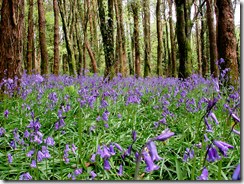 Bluebells are perennial flowers that grow from underground bulbs and are found in the same location year after year. This predictable pattern of growth has led to woodlands around the country becoming locally noted for their fine spring display of bluebells.
Bluebells are perennial flowers that grow from underground bulbs and are found in the same location year after year. This predictable pattern of growth has led to woodlands around the country becoming locally noted for their fine spring display of bluebells.
Although bluebells favour native broadleaved woodland, and put on their best flowering displays in such forests, they also grow in other habitats. It’s not unusual to find swathes of bluebells adorning meadows and cliff-tops, and growing under hedgerows or beneath upland stands of bracken – perhaps a sign that these areas were once covered by native woodland.
Once bluebells finish flowering the flower spikes die back, but the foliage persists for some time. The leaves convert energy from the limited amount of sunlight that still penetrates the now fully developed woodland canopy. This energy is converted into food and transported to the bulb where it’s stored to fuel next spring’s early growth. Eventually the leaves too die back.
The second part of the bluebell’s scientific name Hyacinthoides non-scripta, means “not written on”, a label to distinguish it from the purple hyacinth described in Greek mythology. Legend has it that the youth Hyacinthus, favoured by the sun god, Apollo, was killed by Zepherus, god of the west wind. In his grief, Apollo raised a purple flower from Hyacinthus’s blood, and traced the letters “Ai, Ai” upon its petals so his cries of woe would endure on earth. The bluebell bears no such inscriptions, hence its suffix nonscripta.
Ironically the bluebell’s popularity is the source of one of its biggest threats. Bluebells hybridise readily with the Spanish bluebell (Hyacinthoides hispanica), a species introduced to the horticultural market. In Britain there is growing concern that hybridisation could threaten the genetic integrity of wild bluebells, and the same could happen here in Ireland.
Another major threat is habitat destruction, and loss of hedgerows, scrub and woodland often leads to decimation of local bluebell population. Bluebells have also been listed as a species that could be particularly susceptible to the effects of global warming and climate change.


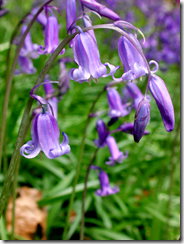
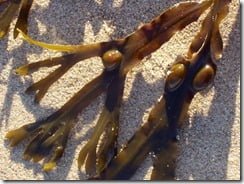
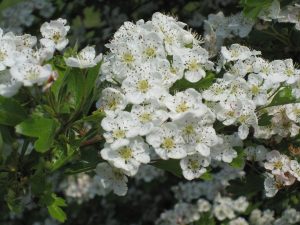
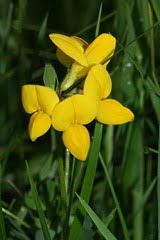




3 comments
Gerry Robinson
When is the best time of the year to plant Bluebells? I have a wooded field and wonder if seeds or bulbs be best.? Thank you.
Sandro Cafolla
Hi, We harvest wild bluebell seeds from private woods and then sell them separately or in woodland and hedgerow seed mixtures.
Bluebells from seed germinate fast but take years to flower, on my own land, acid wet mineral soil and dry heath they flower in three years from seed, on other soils and in light shade in grass such as the avenue to Blarney castle they took between 5 and 7 years to flower from seed.
I would sort’a dispute the claim in your great article that the species is a “globally threatened species, making the Irish population particularly significant internationally”. they only occur in the west of Europe, so the population is not global, but I know what you mean. The British population is being destroyed by being dug in the wild, that’s why we sell seeds from sustainably harvested crops. We have grown them as bulbs for sale and will do so again.
True, they are cross pollinating with the ornamental species and that’s a major problem. however there are wild and large areas that are not so the seed source is 99% pure. we ever see white and pink forms occasionally in the wild. often customer think that bluebells will grow in the sunshine, my experience is that they will not germinate where other weeds out compete them, where they do flower away from trees, there probably was trees there once, hence why flowering in the sun…
Calvin
Thanks for the comment Sandra… and welcome to the Ireland’s Wildlife site.
I guess the point the article makes is that the species is considered threatened across its global range (which as you point out extends across a large swathe of western Europe from central Spain north as far as the Netherlands, with naturalised populations extending into parts of central Europe and introduced plants now naturalised in parts of North America). I wasn’t trying to imply that the species had a global distribution, that’s an entirely different thing.
The term “globally threatened” is widely used to convey that a species is under threat across its extant range. So, for example, you get “globally threatened” parrot species that only occur in a narrow distribution band in the rainforests of South America. They don’t occur globally, but their global population is under threat.
The population of bluebells in the British Isles represents a very significant portion of the global bluebell population (estimates I’ve seen range from 25% to just under 50%) making Ireland and Britain internationally important, in conservation terms, for this iconic plant.